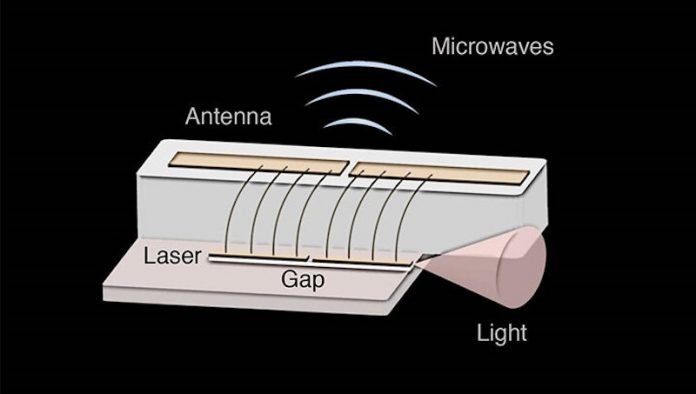
In a new study, Harvard researchers have transmitted data via a semiconductor laser.
This is the first time a laser has been used as a radio frequency transmitter. The finding may help develop new ultra-high-speed Wi-Fi in the near future
The research was conducted by a team from the Harvard John A. Paulson School of Engineering and Applied Sciences.
Previously, the team had discovered that an infrared frequency comb in a quantum cascade laser could be used to generate terahertz frequencies.
They also found that quantum cascade laser frequency combs could also act as integrated transmitters or receivers to efficiently encode information.
In the current study, the team found a way to extract and transmit wireless signals from laser frequency combs.
They transmitted a recording of Dean Martin’s classic “Volare” wirelessly via a semiconductor laser.
They showed that a laser that can emit microwaves wirelessly, modulate them, and receive external radio frequency signals.
The team also found that laser radio could receive signals. They remotely control the laser using microwave signals from another device.
The researchers believe that their finding opens the door to ultra-high-speed Wi-Fi.
Currently, the Harvard Office of Technology Development has protected the intellectual property relating to this project. It is exploring commercialization opportunities.
The senior author of the study is Federico Capasso, the Robert L. Wallace Professor of Applied Physics and Vinton Hayes Senior Research Fellow in Electrical Engineering, at SEAS.
The study is published in the Proceedings of the National Academy of Sciences.
Copyright © 2019 Knowridge Science Report. All rights reserved.



